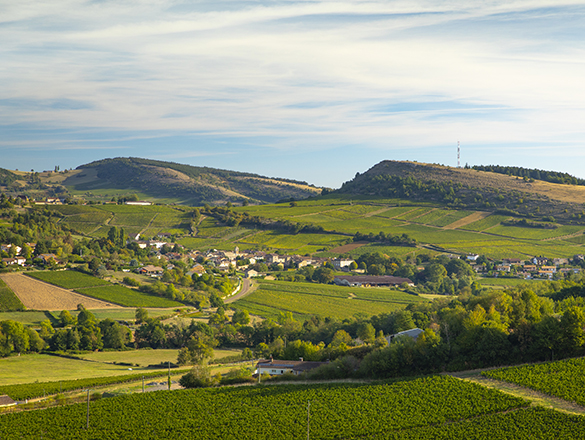
The vineyards of Bourgogne produce some great wines with a historical and international reputation. However, the region is not simply limited to its iconic appellations. In addition to its Village Premier Cru and Grand Cru AOCs, it also produces a range of wonderful Régionale and Village appellations to explore.
You will also find a full list of the Bourgogne’s Climats and lieux-dits on this page.
Check out the complete list of the 84 Bourgogne appellations.
However, your exploration has only just begun. Bourgogne wines have never before offered such high quality. Besides our range of internationally celebrated wines, try some of our lesser-known appellations where there are lots of surprises in store.
And for a fun way to find out more about the wines on offer, try out our “Which Bourgogne wine is right for me?” quiz, or check out Bourgogne Maps to take an interactive tour of the region.
Regional Appellation
VIGNOBLE DU MÂCONNAIS
31 juillet 1937
Whites - Chardonnay.
Reds and rosés - Gamay.
Area under vine:
Whites: 29.30 ha
Reds and rosés: 6.50 ha
Annual harvest:
Whites: 198,095 bottles
Reds and rosés: 35,048 bottles
Source: 5-year average, 2017-2021
An additional geographical denomination that is part of the Régionale Mâcon appellation in the Mâconnais. According to the 2005 specifications rules, the name Mâcon-Bussières refers to white, red, and rosé wines grown within a defined area in the village of Bussières.

Light yellow with hints of greeny gold, Mâcon-Bussières whites seduce from the first whiff, thanks to an elegant profile recalling spring flowers like acacia or wild white rose, and the juice of autumn fruit like pear. More complex aromas evoking spices like aniseed are gradually revealed with a little patience. They are vigorous and lively on the attack, underscoring this sophisticated feel, procuring a fairly long and indulgent finish.
The little-known red, Mâcon-Bussières is produced from the Gamay grape which flourishes in this village’s warm spots on siliceous soils that are perfect for encouraging it to express itself. A lovely garnet color with deep hints of violet is typical of the varietal. On the nose, fruity fragrances recall preserved fruits like gooseberry and crushed raspberries. They are smooth in the mouth with melting tannins and lightly spiced notes of cinnamon.

White: for a perfect flavor combination given the liveliness of this wine on the tongue, opt for an appetizer like a creamy leek tart or risotto verrine. Then allow its acidulated structure to cut through the parsley butter of razor fish à la plancha, gratinated oysters, or snails.
Serving temperatures: 10-11°C as an aperitif, 11-12°C with food.
Red: with its aromatic opulence and fleshy mouth, this wine is a remarkable companion with more fibrous meat dishes such as duck ravioli or braised côte de boeuf. For wine-marinated dishes, choose a hot year such as 2018, which will help soften the acidity of the sauce in a boeuf bourguignon or a snail meurette. To finish a meal, try a local washed-rind cow’s milk cheese that’s not too old, or something drier like a Palet de Bourgogne or a Cendré de Vergy, to match the freshness of the Gamay.
Serving temperature: 14-15°C.

Carved out by the course of the Petite Grosne river to the south and that of its tributary, the Fil, to the north, the heart of the terroir of Bussières is the first notable hill of the southern Mâconnais. To the west, this vine-growing area meets the first plots of Mâcon-Pierreclos and Mâcon-Milly-Lamartine, while beyond the Petite Grosne are the first slopes of Vergisson, classified as Pouilly-Fuissé.

The vines of Bussières, planted between 250 and 350 meters above sea level, cover two hillsides facing one another.
In this area of transition between sedimentary rock and crystalline base, acidic sandy-clay soils begin to appear, and also stony soils made up of hard limestone.
